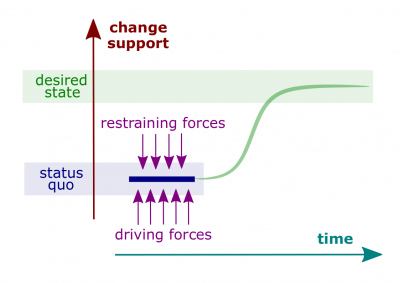Difference between revisions of "Change-support analysis"
| Line 1: | Line 1: | ||
| − | [[File:Status-quo.png|400px|thumb|right|[[Change-support analysis]]]][[Change support analysis]] (hereinafter, the ''Analysis'') is an evaluation of the stakeholder support of the and, vice versa, the resistance to this [[proposed change|change]]. | + | [[File:Status-quo.png|400px|thumb|right|[[Change-support analysis]]]][[Change-support analysis]] (while being alternatively written, [[change support analysis]]; hereinafter, the ''Analysis'') is an evaluation of the stakeholder support of the and, vice versa, the resistance to this [[proposed change|change]]. |
==Key concepts== | ==Key concepts== | ||
Revision as of 06:24, 22 November 2018
Change-support analysis (while being alternatively written, change support analysis; hereinafter, the Analysis) is an evaluation of the stakeholder support of the and, vice versa, the resistance to this change.
Key concepts
- Status quo. A Latin phrase meaning the existing state of affairs.
- Restraining force. A force that hinders movement from the existing equilibrium (Kurt Lewin).
- Driving force. A force that directs behavior away from status quo (Kurt Lewin).
